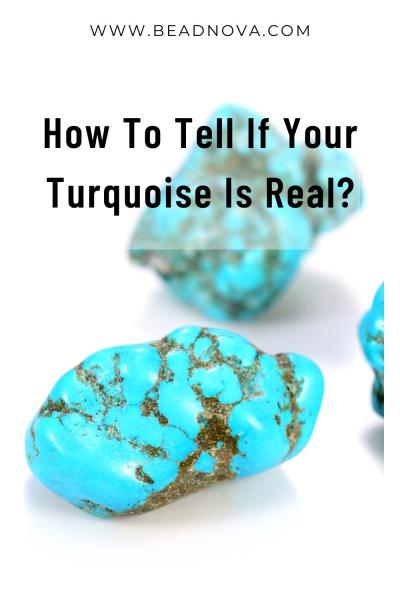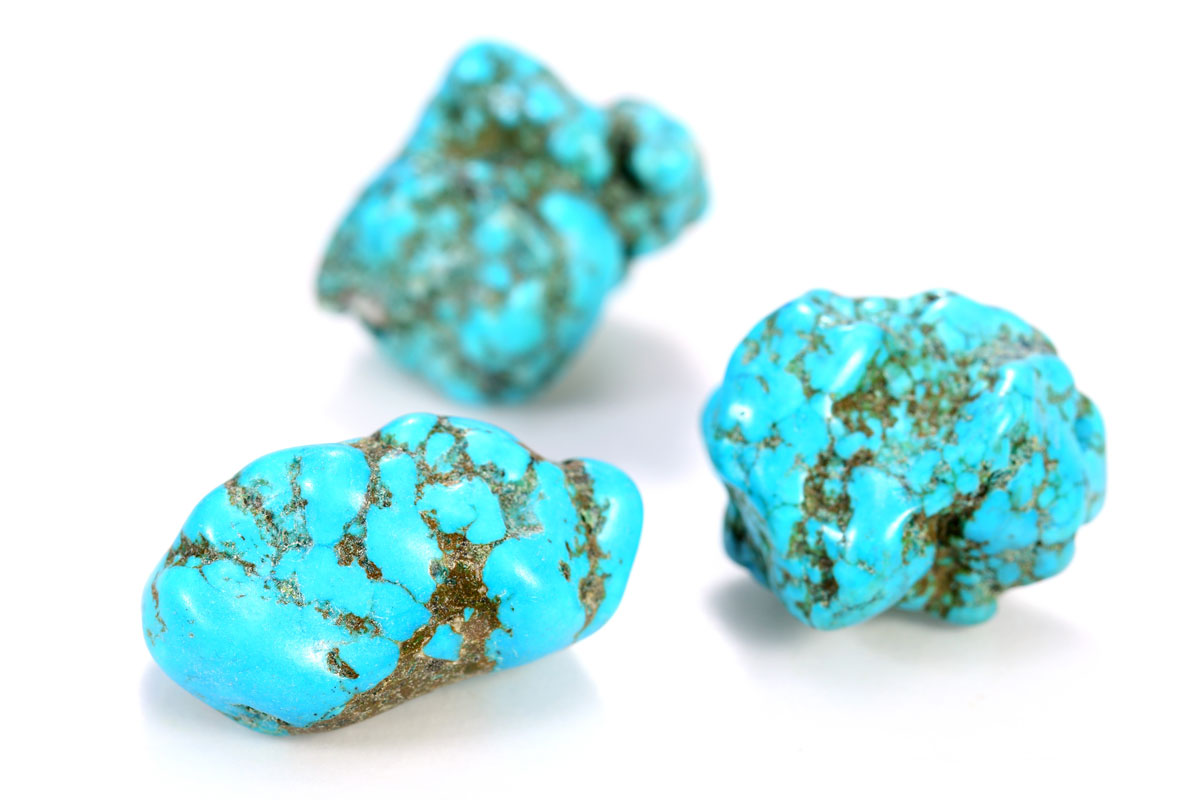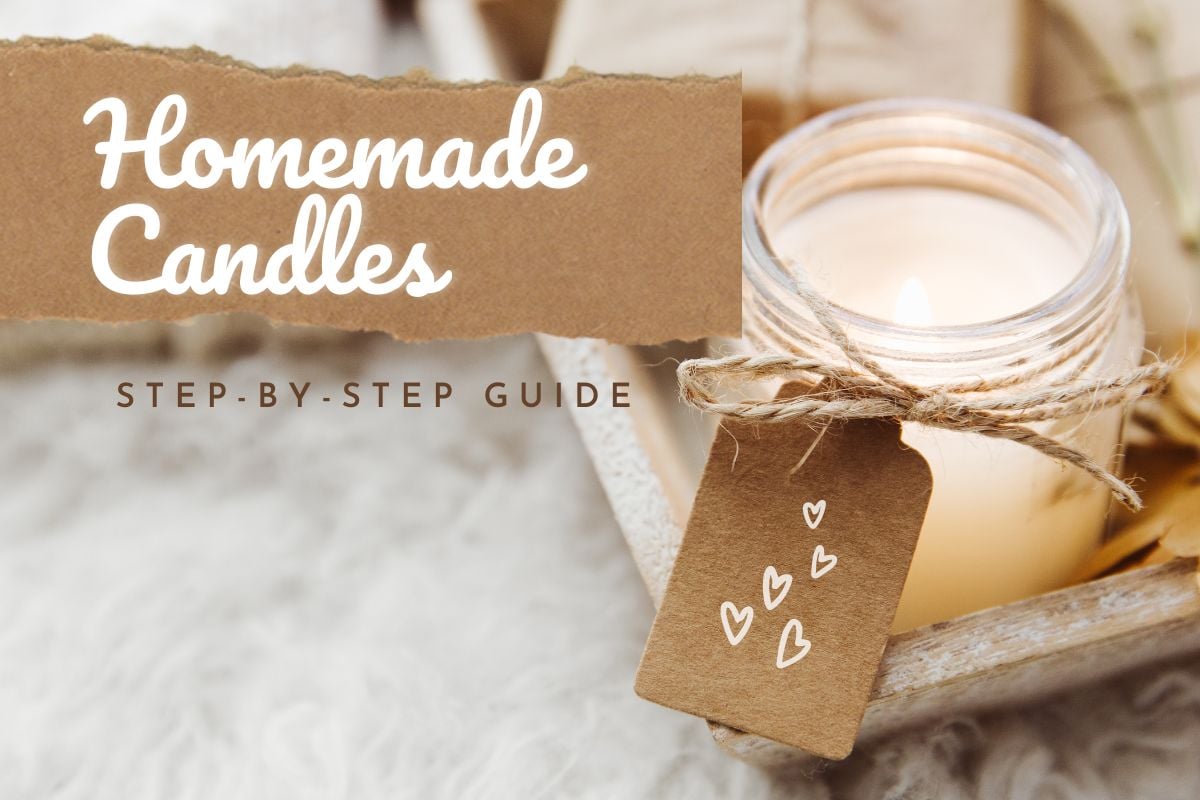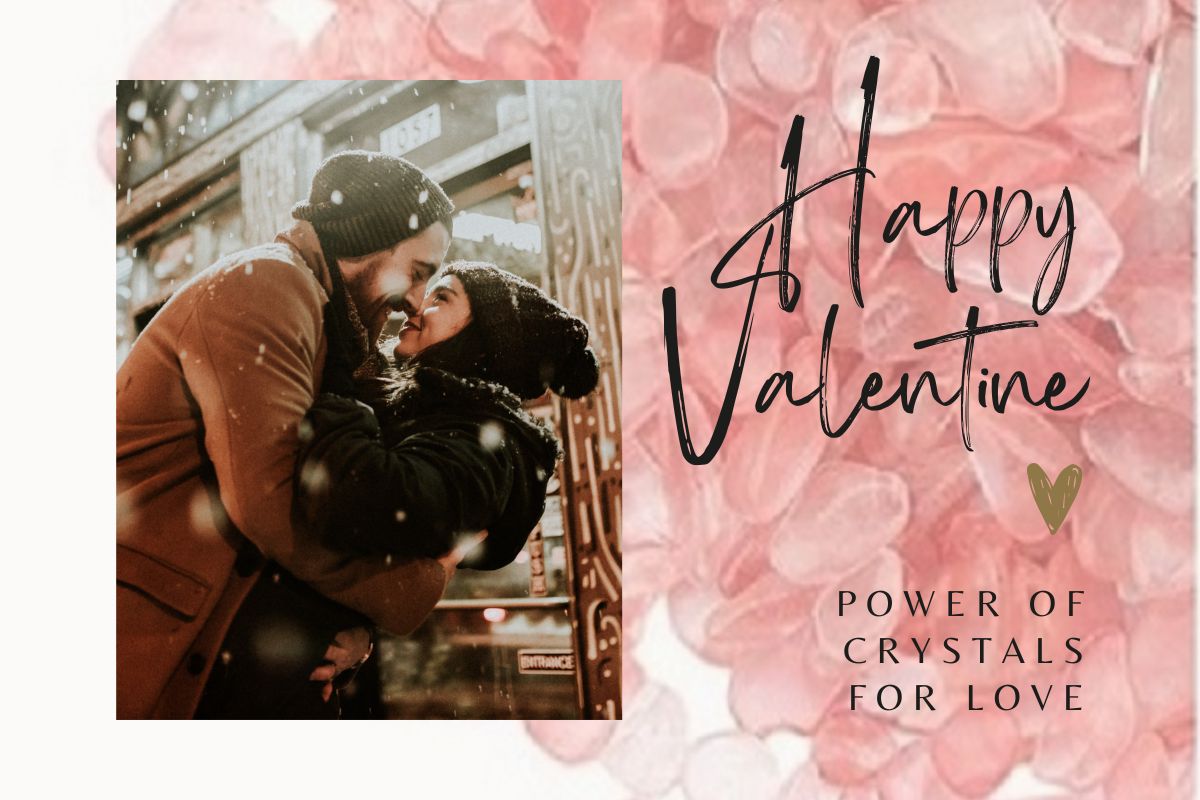There’s a good reason turquoise is so universally adored: it’s one of the most stunning and desirable gems. The stone’s stunning colors and textures make it a joy to wear and incorporate into one’s jewelry collection.
Nothing is more disheartening than squandering a lot of cash on a beautiful piece of gem jewelry only to find out later that the gemstone is phony. This post will teach you how to tell if turquoise is real so you can avoid purchasing fake jewelry.
You must first understand what fake turquoise is before you can tell it apart from genuine turquoise. But do not worry; there are approaches to knowing the difference between real vs. fake turquoise—or turquoise and howlite have been colored.
A white gemstone called howlite is used to create fake turquoise—a highly absorbent mineral; howlite may be colored in virtually any hue. So when it’s done well, it’s nearly impossible to tell if what you own is authentic or counterfeit.
Table of Contents
What Is Turquoise?

Turquoise is easily recognizable because of its well-known blue-green hue. This precious stone is commonly located near copper mines in North America. This is because turquoise is a copper mineral that is extracted alongside copper.
Turquoise, with its distinctive opaque green-blue color, is one of the most sought-after jewels for jewelry design. But on the other hand, there is a drawback to utilizing turquoise in jewelry. The material’s longevity and toughness are two of its significant drawbacks.
This is because, on the Mohs scale, turquoise often falls between a four and a five. Turquoise is softer and more easily damaged than most other gemstones used to manufacture jewelry.
What Is Fake Turquoise, and How Are They Made?
Color is an integral part of the real vs. fake turquoise equation. True turquoise is a vivid blue-green, but howlite, the synthetic stone often used as a substitute, comes in a broad variety of colors.
It is possible to make howlite look turquoise by dyeing it a specific color. But honestly, it’s difficult to tell the genuine article from a fake turquoise when the two look so similar.
Fake turquoise can often be identified by the accumulation of color in flaws. Another thing to consider is that fissures in stone that are too small to feel may have been sprayed on to make them appear more substantial than they actually are.
Read more: Turquoise vs Blue Dyed Howlite Stone: What’s the Difference?
What Are Common Types Of Fake Turquoise?
- Trademark variants: The trademarks that fake turquoise uses are giant red flags. Experienced shoppers can save a lot of money and effort by learning to recognize fake or colored turquoise by its name.
- Resin or synthetic replicas: You can find replicas of fake turquoise jewelry in any high-end boutique or chain store selling women’s clothing. When you factor in the price and location, it’s usually easy how to tell if turquoise is real.
- Dyed howlite: On average, around 90% of what passes for “turquoise” in stores is dyed howlite. In its colored form, the stone looks precisely like turquoise. Therefore, the pricing should be the first red signal for turquoise that has been dyed or is fake. Read more: Turquoise vs Blue Dyed Howlite Stone: What’s the Difference?
- Reconstituted: In another deception, the turquoise is “reconstituted,” meaning that genuine turquoise is ground up and blended with other stones to create a fake. Also, occasionally it’s an entirely other stone that looks like turquoise. Composites of epoxy, plastic, resin, and magnesia have been colored and blended to look like the actual thing.
Read more: All About Gemstone Treatment or Enhancement
How To Tell If Turquoise Is Real?

Fake turquoise is typically crafted from howlite, a soft mineral colored to resemble turquoise. Colored epoxy, plastic, magnesite, and resin are also commonly used as fakes. In another deception, the turquoise is “reconstituted,” meaning that genuine turquoise is ground up and blended with other stones to create a fake.
Learning the difference between real vs. fake turquoise is the first step in identifying a phony piece of turquoise. Unfortunately, there are several variations of fake turquoise; thus, not every method will yield flawless results. Therefore, we propose attempting a couple of the methods we provide to verify its authenticity.
Appearance
Seeing and touching a piece of turquoise can help you determine whether it is genuine, but this is not always the best method. Another thing to remember is that fissures in stone that are too small to feel may have been sprayed on to make them appear more substantial than they are.
Price
One of the most apparent giveaways of faux turquoise is its retail price. This is because of the low cost of turquoise substitutes in most markets. So if you come across a piece of turquoise jewelry that costs more than 10% lower than the going rate for turquoise on the internet, you should proceed with caution and ask further questions.
Acetone Test
The acetone test is a quick and straightforward approach to identifying a synthetic gem that has been colored to look like an authentic one. Conducting this test requires little in the way of preparation. It only takes a few minutes of soaking in the acetone to determine if the stone was artificially dyed to seem turquoise.
Scratch Test
The scratch test is the most reliable method for determining whether or not an item is a genuine turquoise. Howlite and other compounds used to imitate turquoise are softer stones. Try scratching a less noticeable area of the stone, like the back, with your nail to see whether it scratches easily; if it does, you’ve got some howlite. You can tell it’s turquoise if you can’t scratch it. Take care to minimize the scratching that will occur so that your jewelry is not ruined.
Needle Test
Since each turquoise stone is unique, it might be difficult to tell the real thing from a fake. However, the needle test is a great way to tell if a gem is real or fake. To do this test, you will need to preheat a needle. After that, you need to stick the needle into the precious stone. If the gem melts or burns under the needle, it is likely made of epoxy or polyester.

More articles about Gemstones you may like:
5 Easy Ways How to Tell if Amethyst is Real or Fake
How To Tell If Lapis Lazuli Is Real?
The Ultimate Guide to Use Healing Crystals for Beginner
Which Hand to Wear Your Crystal Bracelet?
Blue Crystals List: Names, Meaning, Healing, and Uses
What Crystals Work Well Together? 6 Crystal Combinations Ideas for Different Intentions



